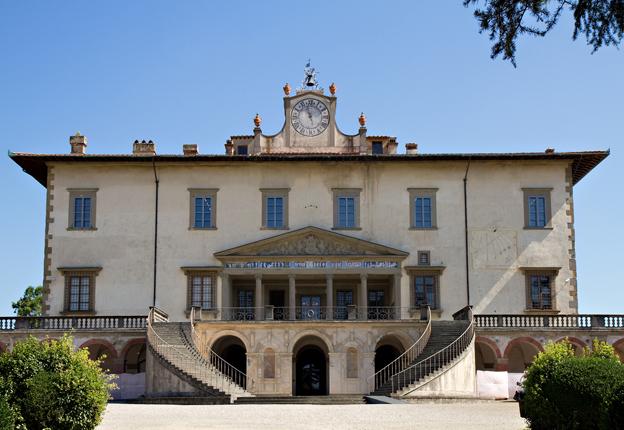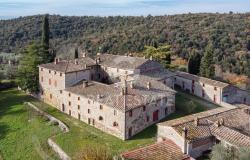Set in the enchanting Tuscan countryside, the Medici villas, built between the 15th and 17th centuries, are worth a stop on your tour around the region.
Declared a UNESCO World Heritage Site in 2013, twelve villas and two gardens make up the site; they include the Boboli Gardens (Florence) and the Pratolino Gardens (Vaglia), the Florentine Villas of Careggi, La Petraia, Castello and Poggio Imperiale, the Belcanto Villa in Fiesole (also known as Villa Fiesole), the Poggio a Caiano Villa, the Villa in Cerreto Guidi, Villa La Magia in Quarrata, near Pistoia, Villa di Artimino in Carmignano near Prato, Cafaggiolo in Barberino di Mugello, Villa del Trebbio in San Piero a Sieve, and Palazzo di Seravezza in Lucca.
As described by UNESCO, “The economic, financial and political fortunes of the Medici were behind extensive patronage that had a decisive effect on the cultural and artistic history of modern Europe. Among the resulting architectural and aesthetic forms, the Medici villas in deep harmony with their gardens and rural environment are among the most original of the Italian Renaissance.”
These countryside residences “provide eminent examples of the rural aristocratic villa dedicated to leisure, the arts and knowledge”.
Some also served as the Medicis’ hunting lodges, particularly Trebbio and Cafaggiolo; others served as summer residences, such as Villa di Artimino, or the Villa di Fiesole, where Lorenzo de' Medici used to gather with his Humanist friends, including Poliziano and Pico della Mirandola.
Villa La Màgia is remembered as the site of the historic encounter between Duke Alessandro de' Medici and Emperor Charles V, which took place in 1536.
The Boboli Gardens are the perfect example of the “giardino all’italiana” – Italian garden. Covering an area of 45,000 square meters behind Pitti Palace, they were laid out for Eleonora di Toledo, the wife of Cosimo I de' Medici in the 16th century.
Today, these residences serve different functions: some of them are museums, like Villa La Petraia, in a panoramic position overlooking Florence, Villa di Cerreto Guidi, and Villa Poggio a Caiano. Others are institutional seats, such as Villa Castello, the seat of the Accademia della Crusca.













